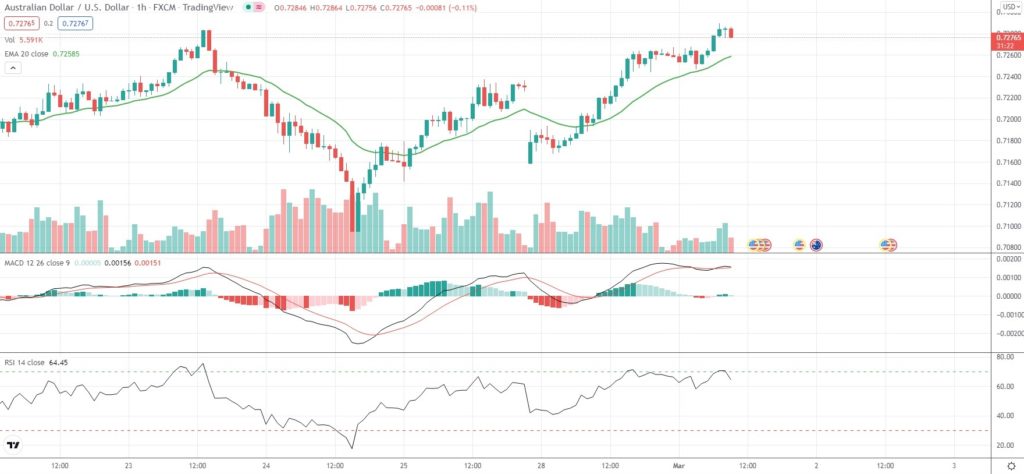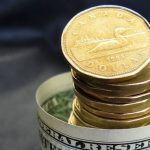AUD/USD registered a 1 1/2-month high on Tuesday, as the Reserve Bank of Australia kept policy settings intact, while Australia’s fourth-quarter trade performance proved to be less of a drag on the economy than initially expected.
The RBA kept its official cash rate intact at a record low level of 0.10% for the 15th consecutive month during its policy meeting earlier on Tuesday, in line with market expectations.
While the war in Ukraine is a major new source of uncertainty, RBA policy makers once again stressed on unpredictability over how persistent the rise in Australia’s inflation would be due to recent developments in global energy markets and continuing supply-side issues.
Underlying inflation is forecast to accelerate further during the upcoming quarters to about 3.25%, before easing to 2.75% in 2023.
The RBA Board also noted that wages growth was still modest and it would likely take some time before it is at a rate consistent with inflation being at target.
RBA Governor Philip Lowe had said a first rate hike could occur later in 2022 given the economy keeps recovering. Global markets are now pricing in a rate hike as soon as July.
Meanwhile, the latest data from the Australian Bureau of Statistics revealed the nation’s current account surplus had decreased to AUD 12.7 billion in Q4 from AUD 22 billion in the prior quarter.
Still, net exports cut only 0.2 percentage points from Australia’s GDP in Q4 compared with market expectations of a 1.0 percentage point hit.
“Net exports represent a much smaller drag on growth in Q4 than anticipated,” Andrew Hanlan, a senior economist at Westpac, was quoted as saying by Reuters.
“Our Q4 GDP forecast is upgraded from 2.8% qtr to 3.3% qtr.”
Fourth-quarter GDP numbers are due out tomorrow, with a consensus of analyst estimates pointing to a 3% growth.
As of 9:24 GMT on Tuesday AUD/USD was edging up 0.24% to trade at 0.7278. Earlier in the trading session the major Forex pair climbed as high as 0.7290, which has been its strongest level since January 14th (0.7293).
Bond Yield Spread
The spread between 2-year Australian and 2-year US bond yields, which reflects the flow of funds in a short term, equaled -36.11 basis points (-0.3611%) as of 9:15 GMT on Tuesday, up from -36.6 basis points on February 28th.
Daily Pivot Levels (traditional method of calculation)
Central Pivot – 0.7228
R1 – 0.7299
R2 – 0.7336
R3 – 0.7406
R4 – 0.7477
S1 – 0.7191
S2 – 0.7121
S3 – 0.7083
S4 – 0.7046






